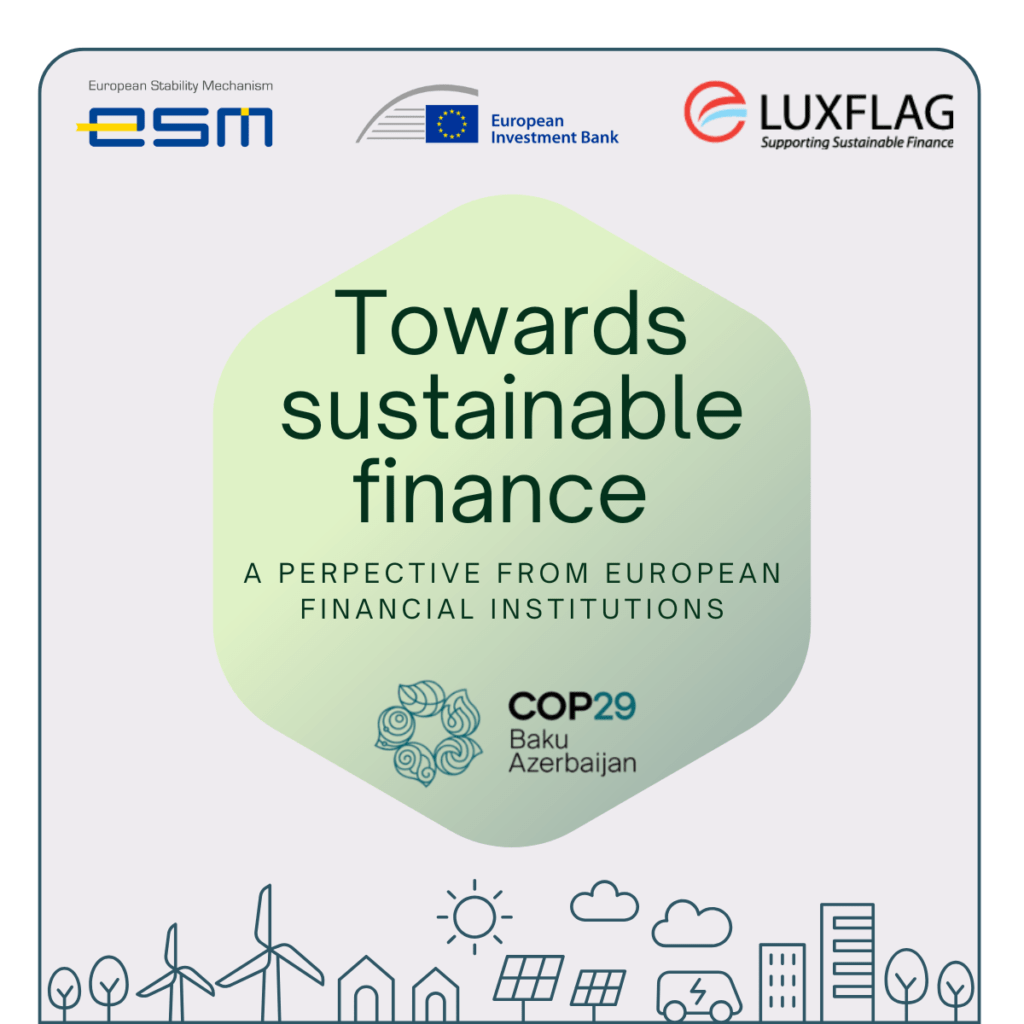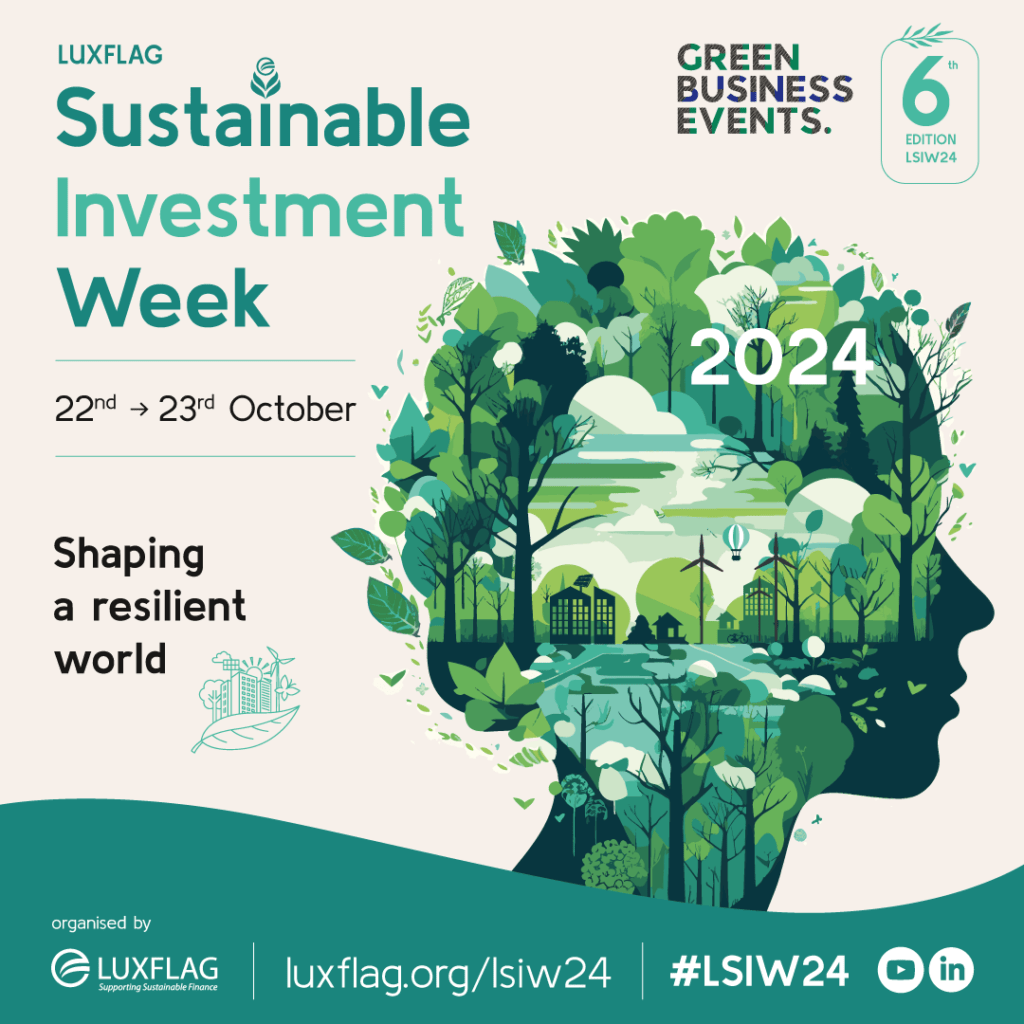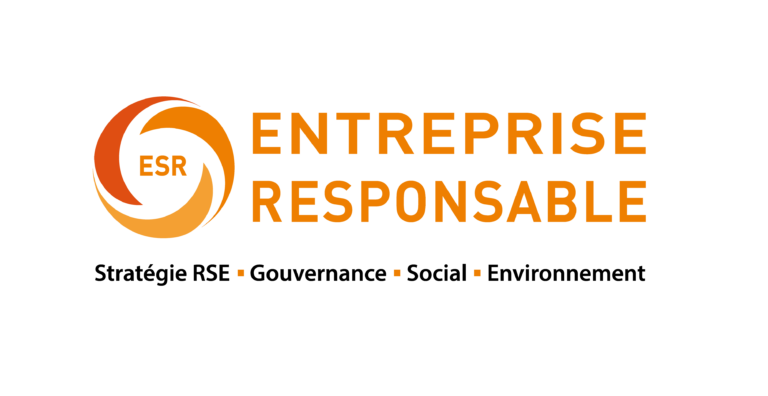When the Insurance Industry Embraces Sustainability Labelling
Last year Luxembourg sustainability and responsible investment labelling agency LuxFLAG extended its scope beyond funds and green bonds to the insurance industry. Chairwoman Denise Voss and head of Sustainability Operations Ahmed Ouamara explain the challenges of creating a certification process for the sustainability of insurance activities – initially unit-linked life insurance products – and emerging opportunities in a financial sector in transition.
A decade and a half after the launch of LuxFLAG as an independent non-profit entity dedicated to certifying the authenticity of responsible investment vehicles for the benefit of investors, the organisation branched out last year with the creation of the LuxFLAG Sustainable Insurance Product (LSIP) label – joining a total of 365 labelled products with €190 billion in assets at the end of last year.
Since then LuxFLAG – which appointed Isabelle Delas as CEO to succeed to the late Sachin Vankalas – has added a further 18 products authorised since April 1 to use its labels. These now encompass four positive impact labels, for microfinance, climate finance environment and green bonds, and two sustainable transition labels, for ESG investment funds and sustainable insurance products, notes chairwoman Denise Voss.
Labels have been awarded to products not just from Luxembourg but domiciled in Belgium, Denmark, France, Finland, Germany, Ireland, Monaco and Spain.
The growth in LuxFLAG’s activities and range of labelled products reflect developments across the European and global financial services industry, especially with the introduction of the Sustainable Finance Disclosure Regulation and the EU taxonomy for sustainable activities, as well as the increasing convergence of regulatory requirements for funds and other comparable products such as insurance-linked investments.
“We added this insurance label because the SFDR and the rest of the European regulation applies to all financial market participants,” Ms Voss says. “Asset managers may be out ahead, but the insurance and banking industries all need to comply as well. At the request of Luxembourg’s Association of Insurance and Reinsurance Companies (ACA), we set up a working group with members of the insurance industry, auditors, lawyers and other experts to draw up criteria for the label. It’s very similar to the ESG criteria for funds, but specific to the insurance industry.”
Change of mindset
Obtaining a LuxFLAG label is not the work of a moment, she notes: “The education required to do all this needs to run throughout an organisation, and it takes time. It’s not like the days when asset management was just about looking at the numbers. It requires a change of mindset, and time to incorporate all of those non-financial elements into areas such as investment management and risk management.”
Ahmed Ouamara, the organisation’s head of Sustainability Operations, adds: “The SFDR is the baseline, but what we do is something more, because we’re neutral and independent. We certify not only the product and the portfolio, but also that the construction process is in line with the label criteria.” The labelling process, he says, includes not only a review of the documentation, but just as importantly sampling and testing of the portfolio to ensure that the research process is systematic and has been properly conducted.
LuxFLAG’s coverage of financial instruments other than investment funds differentiates it from many of the other financial product labelling agencies across Europe. “Our aim is to engage with as many different market participants as possible,” Mr Ouamara says. “In insurance we are a pioneer – there are currently no other labels for insurance products.”
The first labels for insurance products were awarded last December, and Ms Voss says LuxFLAG is increasingly being contacted by other industry members seeking to understand the requirements and process. “The first batch of applicants say our review was extremely thorough – perhaps more than people expected, which I take as a compliment. It means you really need to earn the label.”
Labelling criteria
Mr Ouamara notes that the process starts with preliminary discussions to ensure that insurers can provide the right documentation and understand the application process. LuxFLAG’s process foresees that applicants can be rejected, but Ms Voss says this is not a desired outcome. “It’s about engaging with the asset manager or insurance company, so they understand what they need to do;” she says. “Sometimes they have to go away and maybe come back in a year. Part of what the label is about is helping people progress along the journey.”
The award of the insurance label is based on six criteria, starting with the sustainability of the product’s underlying investment holdings; at least 66% of investments under discretionary management must comply with at least one of the seven responsible investment strategies defined by sustainable finance network Eurosif: best in class according to ESG criteria, engagement and voting, explicit ESG integration, exclusions, impact investing, screening according to international standards, and investment according to sustainability-linked themes.
In addition, the product must be classified under SFDR article 8 (sustainability characteristics) or 9 (sustainability objective). For new unit-linked policies, at least 66% of offered funds and 50% of invested funds must be article 8 or 9; for existing products the thresholds are 50% and 33% respectively. The insurer should incorporate responsible investment strategies into the product’s investment process.
Underlying investments must comply with LuxFLAG’s LSIP exclusion policy; the insurer must adhere to best corporate responsibility and sustainability market practice, and regularly disclose sustainability-related information publicly, including key performance indicators and data sources; and the insurer must provide legal documentation including licensing details and for Luxembourg companies, the product technical specifications submitted to industry regulator Commissariat aux Assurances.
Exclusion policies
Says Mr Ouamara: “In general, we require at least three responsible investing strategies applied at portfolio level for the ESG label but currently only one for the LSIP label. But the requirements will evolve over time. We would expect it to change as the market matures.”
He adds that the introduction of its own exclusion policies is a relatively recent development for LuxFLAG: “The LSIP Exclusion policy is a mix of sector and value-based exclusions, and covers controversial behaviour, controversial weapons and controversial jurisdictions, as well as the tobacco sector. The exclusion of nuclear activities is on hold until further notice, given discussions at the European political level.”
Ms Voss acknowledges that for herself and Mr Ouamara, who share a background in the asset management industry, the creation of the insurance label has been “a learning experience for us as well. Fortunately, we have insurance experts we can call upon as part of the education and governance process.”
Labelling goes through three layers of review starting with LuxFLAG’s CEO, who makes a recommendation to the eligibility committee for the respective label; in the case of the insurance label this includes industry and ESG specialists. The committee in turn issues a recommendation to the board, which determines whether a label should be granted or not.
Challenge of existing products
“The challenge with the insurance industry is that unlike an investment fund, for which the investment strategy can be amended or an additional asset class added, for an insurance policy that’s not as easy,” Ms Voss says. “It is probably simpler to create a new product that meets the requirements of the label than to bring an existing one into compliance. That’s something the industry is having to figure out.”
She adds: “The challenges are very different from one insurer to another, whether it’s on the distribution side, on governance or about the availability of data. Initially insurers with unit-linked products had to determine which funds were under SFDR article 8 and 9, although their number has recently shot up. But we will soon be at the stage where asset managers must implement the SFDR level 2 rules. All of this is happening at the speed of light.
“Meanwhile the clock is ticking as we try to get to net zero. We can play our part in this process by sharing best practice, for example on divestment policy or the extent of disclosures. Insurance is a more conservative industry than the fund industry. The products are designed for the longer term – policy holders may be investing in the same product for multiple decades. Hence, it may take more work for insurance companies to figure out what to do about their existing products – but they will get there.”







